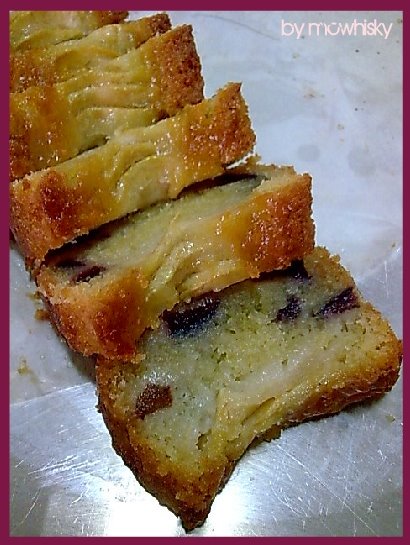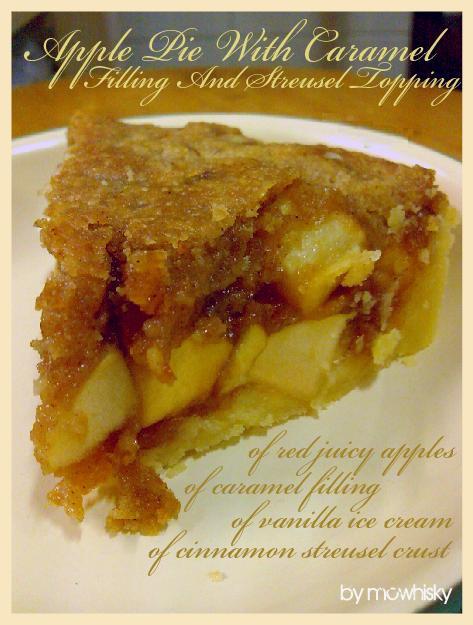Recently, we have been occupying most of our time collecting good reads, streaming the very talented and charming David Archuleta's performance cum shows and experimenting tarty bakes. Lives get busy and healthy (think of going for walks and jogs every other morning for 2 hours straight with the girls, and more trekking to come on weekends), updating blogs came off pretty infrequent, which is something bad, we reckon. Well, speaking of good reads, let's just forget about Danielle Steel, J.K Rowling, J.R.R Tolkien and Dan Brown this time, and hop onto the other genre which is very much related to the world of pastry and baking. For the record, we're still craving for Kim Young Mo's hard-to-get cookbook, after hustling all over the town's bookstore for a wider huntdown. Not getting Kim's winning cookbook was not as devastating as we would have predicted though, since other cookbooks came along at the very right time.

The original sable dough, which weighs in at 1.2kg was supposed to be the base for two 11-12 inches wide flan pan. We halved the dough recipe to spare extra cup of flour for the apple and plum cake. We have not heard of sable dough when it comes to tart-making, and efforts for spending on a bar of pure french butter didn't hurt much either as we totally agree that these are the best flavorsome melt-in-your-mouth tart that we've tasted. Unlike the very usual shortcrust tart, this has made a cut - think of melt-in-your-mouth butter shortbread which has a light crisp texture on the outside, fully engrossed with the aroma of pure unsalted butter. If you're eyeing for crusty and hard in texture tarts, Daniel Tay's sable dough tarts will not fulfill your request, but it will definitely made it into your baking wish list.

Wait! There's more plus point if we speak of the sable dough. We, basically don't fancy making pies and tarts as we find the sides of the tarts were usually messily trimmed and we were obviously disturbed by it; which looked unprofessionally done - or shall we say; unimpressive. It used to be an excuse to dodge request for tarts, but this ain't going to happen no more. The sable dough was perfect and less time consuming; no gentle hands were needed to smoothen out or trim the sides of the dough when it has been laid onto a tart or flan pan. It is easily handled since it is pliable and smooth, thus, small cracks can be hardly noticeable after side-trimming was done with a pastry cutter or even a knife.
The verdict of the tart; we would say the overall tart was indeed tasty. The fillings; which is known as almond cream in the book blends in well with the sable dough tart. Almonds and butter will come into our mind when this grand tart runs into our taste buds; which we find that is the two main flavor that plays a distinctive role in this tart itself.
The baked-in fruit toppings vary from pear to peaches, and not to be left out; plums! As for other options like strawberries, blueberries and raspberries; it will be laid onto the tart once the tart is fully baked - bake the tart with its fillings, let cool and topped with your choice of berries, brush with apricot glaze and serve.
Almond Plum Tart (Adapted from Daniel Tay's Just Desserts And Other Baked Treats)
Tart:
175g unsalted butter, barely thawed for about 10 minutes in room temperature
250g all-purpose flour, sifted
A tiny pinch of salt
100g icing sugar
35g finely grounded blanched almond
1 egg, medium-sized, lightly beaten
1. Cut butter into small cubes and place in a mixing bowl. Add flour, salt, icing sugar and almonds and mix with an electric mixer at medium speed to form a smooth dough.
2. Beat in eggs and mix on low speed until smooth.
3. Cover dough with cling film and refrigerate for 2-3 hours before using.
Almond cream:
125ml single (light) cream, leave to thaw at room temperature for 10 minutes before use
180g grounded almonds, finely grounded
30g corn flour, sifted
150g unsalted butter, softened at room temperature
200g icing sugar, sifted
2 eggs, medium-sized
2 tablespoon rum liquor
1. Place almond, corn flour, butter and sugar in a mixing bowl and beat for about 8 minutes until batter is free from lumps.
2. Add in eggs one at a time to avoid batter being curdled. Beat until smooth. Add cream and rum and stir until smooth.
Assembly:
1 portion of tart (recipe above)
1 portion of almond cream (recipe above)
5 large plums, cored and thinly sliced into wedges form
Apricot glaze, for glazing
1. Preheat oven to 170"C
2. On a lightly floured surface, roll out sable dough into a 0.5 cm thick sheet, large enough to cover the base and sides of 12 inch tart pan. Line pan and trim edges to neaten.
3. Spoon in almond cream and spread cream out evenly with an angle palette knife.
4. Arrange wedged plums on top of the cream. Bake for 20-30 minutes or until the tart has turned golden brown. Remove from heat and set aside on wire rack to cool.
5. Brush the top surface with apricot glaze. Serve warm, best with a cup of freshly brewed unsweetened tea.

Just in case there are abundance of red juicy plums on the kitchen counter, fret not. Get down and dirty for the next baking session; which may sound like baking from scratch. A loaf of tea cake; which may sounded similarly to a plum cake.

We have stumbled upon Nigel Slater's plum cake recipe, from The Kitchen Diaries, and it was undoubtedly good, moist and refreshing. We altered the recipe a little by adding slices of apples on the top of the cake (that is how the lonely green apple ended its life, how sweet) and decrease the number of plums to 5.
Fresh Plum And Apple Cake (adapted from Nigel Slater's Fresh Plum Cake, The Kitchen Diaries)
75g butter
75g caster sugar
1 egg
35g all purpose flour, sifted
3/4 teaspoon baking powder, sifted
90g almongs, finely grounded
5 plums, stoned and cut into 1 inch cube
1 green apple, Granny Smith's, cored and cut into thin wedge slices
1. Preheat the oven to 180"C.
2. Line a loaf tin with baking paper. We used a loaf tin, which measures at 16cm x 6cm.
3. Cream the butter and sugar until pale and fluffy. Beat in egg. Fold in flour, baking powder and grounded almonds with a spatula. Fold in the plum pieces into the batter with the spatula.

4. Pour the batter into the loaf tin and arrange the sliced apples on top of the batter.
5. Bake for 30-40 minutes, or until skewer inserted into the middle of the cake comes out clean. Remove from heat and cool slightly in the tin. When the cake is warm to touch, remove the cake from the tin and cool on wire rack. Serve warm with tea. Yield 6 slices.
Well, we now love brunch and tea-times.




















































